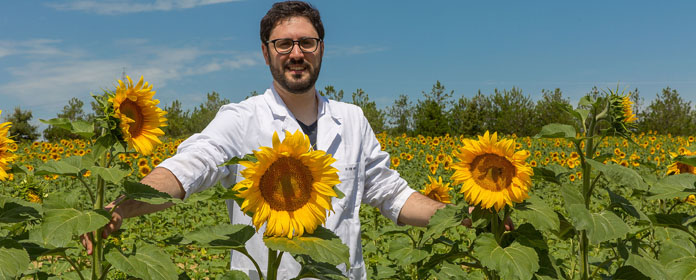A research of the University of Navarra proposes improvements for crop production.
The goal of this study has been to propose solutions to improve crop yields and pest protection.

Combining humic substances with the plant microbiome. This is the proposal of a research defended at the School of Sciences of the University of Navarra to search for more effective and sustainable solutions for the development of crops. The thesis of Dr. David de Hita "Effects of sedimentary humic acids on endophytic microbiomes: implications andagronomical potential" is attached to the Chair TIMAC AGRO - University of Navarra.
The work developed by De Hita has pioneered the combination of humic substances and plant endophytic microorganisms. "Knowing which microorganisms are affected by the use of humic substances allows us to look for synergies that positively affect the plant, creating more effective and environmentally friendly biostimulants. We have also isolated and characterized a group of these microorganisms with the goal to test their effect on plant growth," adds the young researcher.
De Hita's research has focused on the use of humic substances - organic substances used in agriculture as plant growth stimulants - in the plant microbiome. "The goal is to create knowledge that helps improve agricultural yields but always respecting the environment," adds De Hita.
The interest of this research is twofold since, on the one hand, new products could be created for the agricultural industry "with a positive impact on the environment avoiding the use of pesticides or chemical fertilizers" and, on the other hand, it would have an impact on the farmer's Economics who "with a single product would solve several problems that today must be addressed with different products".
The development future of this research involves using some of the isolated endophytic microorganisms and testing the effect they have on the development of the crops. "This phase is very important as we not only have to take into account the subject of microorganism we can use but also the subject of plant, the mode and timing of application, and the amount of product. All this takes time and a lot of work, but we believe we can do it," concludes the young doctor.
